| Issue #148 • July/August, 2014 |

For delicious squaw candy, start with the freshest fish.
One fresh July evening at our summer cabin in Soldotna, Alaska, my husband, Tom, and I sat with friends around a campfire. We talked about salmon, wondered why the main run reds were late this year, and swapped fish tales. Someone began to pass around a clear plastic package of squaw candy sticks of salmon jerky. As I was a relatively new resident of Alaska, this was a novelty to me. I took one of the amber sticks, sniffed it, and cautiously took a bite. It was smoky, salty, savory, and, well, indescribable.
“Wow! Who brought this?” I asked, taking a larger bite.
Our Alaskan friend Glenn Kooly grinned, “I did. I just finished them this afternoon. What do you think?”
“This is … wonderful!” I said.
“How did you make it?” Tom asked.
Glenn leaned back in his chair. “Well, I don’t generally share my special recipe with just anybody. It’s been sort of a family secret for centuries.” Glenn’s father is Norwegian; his mother native Alaskan Inuit.
“Aw, come on!” Tom persisted. My husband fancies himself a gourmet cook, and in fact is able to prepare any kind of fish better than anyone I know.
“Oh please, do tell him?” I begged, taking another bite.
“Well, you have to have a cold smoker,” Glenn said.
“I have a smoker,” Tom replied, pointing to an ugly black, round metal can a few feet away.
“Oh, no, that won’t work, man! You don’t want to cook it. You want to smoke it. You need a cold smoker. It takes days to make. Quite a process.” Glenn grinned.
I knew Tom would take the bait. He said matter-of-factly, “Well, I will get a cold smoker then.” Talking with his mouth full he asked, “Where did you buy yours?”
“Hmmph! Can’t buy one. Have to make it.” Glenn paused and looked intently at Tom. “You come by the house tomorrow and I’ll show you mine. If you actually go to the trouble to build one, then I’ll give you my recipe.”
“Deal!”
The next day we stood in Glenn’s backyard craning our necks to appreciate an authentic Alaskan Inuit native-built cold smoker. It was a sight a twelve-foot-tall wooden contraption that looked like an outhouse for Paul Bunyan.
Smoke was slowly curling from the top. The smell was heavenly. Tom walked around it, inspecting it from every angle.
“Now, see, you have to have little vents down here at the bottom and up at the top,” Glenn explained, opening the door. “Look!” he said, stepping back and inviting us to peek inside. There, hanging from horizontal poles about 10 feet in the air, were probably more than a hundred pieces of the delectable red jerky in strips about 18 inches long.
We took the smokehouse’s measurements that very afternoon, and I went to work drawing out a detailed building plan. The next morning, we went to the big box store in Kenai, bought stick lumber and plywood, and began building in earnest.
A couple of days later, we were finished and it looked smashing. We sided ours with cedar planks left over from our cabin and topped it with a little green metal roof. I was so proud!
Glenn came by to check our project, and because he was duly impressed, he shared his “secret” Inuit/Norwegian method with us. And I’ll share it with you. But first you have to build a smoker.

Glenn Kooly and his smoker
Building the cold smoker
Materials:
- 2×6 lumber for framing the base
- 2×4 lumber for framing the sides, door, and rafters. If you cannot buy twelve-foot-long 2x4s, stagger the joints at the corners.
- 7 sheets of ½-inch thick plywood for the sheathing and the roof
- Nails
- Nail gun (not necessary, but it helps the process go quickly)
- Door hinges and latch
- Screening to cover small vents on the lower sides, the gable ends, and a large screen at the top
Instructions:
Construct a flat, 4-foot-square foundation from 2×6 lumber, bracing the corners. Frame each 4×12-foot side flat on the ground. Raise the side framing into place and nail the sections together at the corners.
Sheathe the smoke house with plywood and then with planking if you wish. On the front, frame a doorway, 2 feet wide by 6 feet tall, and cover it with plywood as well. Cut two small vents in the side walls about 6 inches from the ground and cover the vents with screening. This is necessary for proper ventilation. Tack screening over the top of the house before you install the rafters and the roof to protect from bees or other insects. Build three little rafters out of 2x4s and sheathe them with plywood and shingles or metal roofing. Vent the gable ends of the rafters too.

Smoking the fish
The fish:
The fish should be red salmon (also known as sockeye) and wild Alaskan is surely the best. If you can buy it very fresh, fine. Do not use frozen salmon or salmon that is more than one day out of the river. If you are able to catch it yourself, be certain to bleed the fish as soon as it is caught. Some people use silver salmon for squaw candy, but we think red is the best.
After filleting the fish carefully, cut strips lengthwise from the shoulder to the tail, about ½ inch wide, and leave on the skin. On most Kenai red salmon, your strips will be about 18 inches long.
Cut butcher’s twine into 18-inch pieces, and tie the ends together to make a circle. Then attach the tail end of each salmon strip to the twine with a slip knot.
Be sure to tie the tail end of the fillet. This is very important. If you hang the fillets by the shoulder end, the flesh may very likely fall off while smoking.
The brine/marinade:
Fill a five-gallon bucket with water, then add kosher or canning salt. The amount of salt in the brine is critical, so to ensure that you add just the right amount, gently place a fresh, raw egg in the bucket of water first. It should sink to the bottom of the bucket. Begin gradually adding the salt, stirring it gently to dissolve it. As soon as the egg floats, stop adding salt.
Remove the egg and dissolve 1½ cups of brown sugar in the salt brine. The marinade is now ready for the fish. Leave the strings attached to the fish while the strips are soaking in the marinade, so they will be ready to hang immediately after brining.
Timing the marinating process:
Timing is critical. Allow the fish to marinate exactly 50 minutes. After 50 minutes, drain off the marinade and hang the fish over poles, one strip on either side. Allow strips to drip dry about 30 minutes.
The right smoke:
Soak about a pound of alder wood chips in a bucket of water overnight. Soaking the chips allows them to smoke, but not burn. While the fish strips are draining on the poles, place the alder wood chips on the cold burner element of your hot can smoker, cover the can, and turn it on.
Do not open the can smoker unless it stops smoking prematurely for some reason. If you do open the can smoker, the chips may flame up with the introduction of oxygen and you don’t want a flame, just smoke.
Smoking process:
Drape the fish over poles suspended high in the cold smoker and leave them undisturbed for five days. Every morning fill the hot smoker with new wet chips and smoke fish for about three hours. When the strips are ready, they will begin to curl slightly, and the flesh will become a translucent, amber-red. The texture of the fish will feel like beef jerky.
Packaging and preserving options:
You may package your squaw candy in vacuum-sealed food storage bags for freezing or you may pressure can them. If you choose to can them, they taste wonderful spiced with jalapeño peppers or a little added brown sugar.
[Consult your canning manual for directions on canning fish. Editors]
Making squaw candy is a lot of work, but is so worth the effort. Wild Alaskan red salmon is a great source of Omega-3 fatty acids, and is good for heart health, as well as being delicious, pretty, and wonderful to share with friends around a campfire on a fresh July evening.



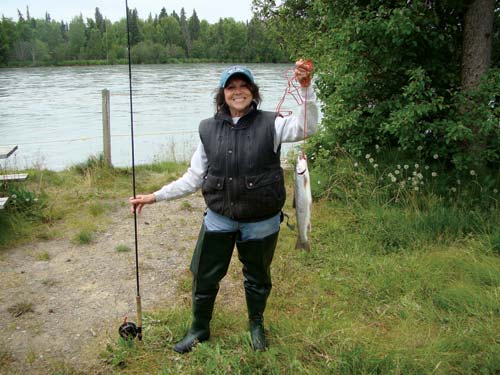

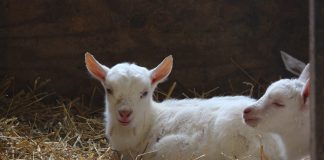




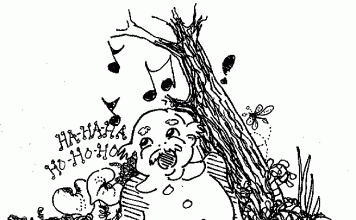
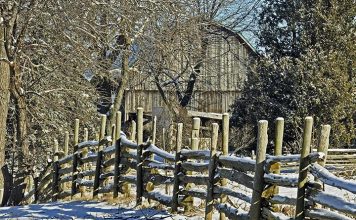
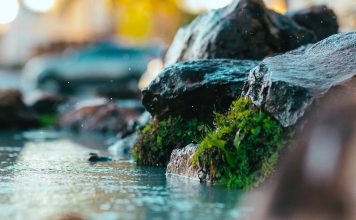

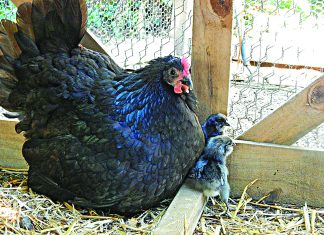
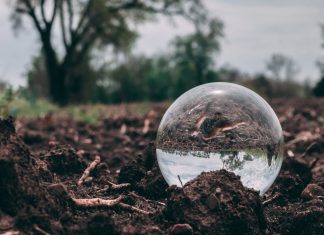
Some Maori people in New Zealand use a tall smoker similar to yours. They use sacking like a curtain over the entrance. Fairly high up in the smokehouse interior are a number of wooden dowels. The smokehouse is/was on a farm very close to the beach. Not far from here were an island group called the Cavallis, where abundant schools of big kingfish roamed around deep-water pinnacles.
Once cought, Maori sliced huge clean fillets (each about a meter long) from each fish and, once cured with salt, brown sugar and local herbs. Each fillet was hung, scales facing down. over one of the dowels. There they were cooked very slowly all day to dry them. The drying flame came from a small smokey fire that was way below the fillets to avoid overcooking them.
Overnight, green branches of Ti Tree were fed to the by now subdued fire embers producing large amounts of fragrant smoke. The smoking part of the process continued through the night and ended in the morning, Then the fish were left to cool down. The aroma of perfectly smoked kingfish is heavenly – eating them was a rapturous, delicious surprise. Plenty for the tribe and for us campers.
Hi Lorna,
If you tap on the photo, they should popup into a full view mode.
Thanks!
Sam
Oh no heeeeeelp! This page cuts off many of the pictures when viewing in mobile view and I desperately want to see them!!
Jane, Tom & Glenn,
Hello from Ohio!!! I’m interested in building the cold smoker. I haven’t seen anything that tall… maybe because it’s the lower 48 and we don’t get a lot of red salmon down here (haha)!
What is the advantage of having the smoker so tall!? How high up do you set the meat?
It looks like your burner is inside the smoke house? Is that why the building is so tall? Would this still work with a firebox OUTSIDE the smoker? Most cold wood smokers down here have the firebox 10′-12′ away from the smoke house. The smoke has cooled down by the time it gets to the smoke house.
I’m “assuming” because it is a cold smoker…the plywood is not a problem? I’ve heard several people say either way is okay as long as it doesn’t get too hot. I’m thinking of making mine completely out of cedar….just to be safe.
If you have more pictures of the smoker being built … would it be possible to see them? It’s hard to tell by the pictures exactly how high up the meat is hanging. Anything would help.
LOVE the tip about the salt & the egg floating!!
We also don’t have Alder wood in Southern Ohio. What would be a good substitute? I, as well as a good many other people, have never tasted Alder wood smoke so I don’t know what I would expect the taste to be like!? We have plenty of hickory, as well as all sorts of fruit trees.
Again…I’m assuming this brine will work for “most” meats!? Or is this specifically for fish (salmon)!??
Any information will be GREATLY appreciated!!
Thanks again for the inspiration!!!
VR,
Thomas Clodfelter
McDermott Ohio